Treatment
Welcome to a space for muscle relief and whole-body health. Through a range of precise massage therapy techniques, we help your body heal in the most natural ways possible. Reserve your massage therapy appointment today!
Massage for Flexibility and Injury Relief
Myofascial Release Therapy
Are you experiencing chronic tension, sore muscles, and lack of flexibility? You could benefit greatly from the massage technique called myofascial release therapy.
Myofascial release therapy works to break up the connective tissue known as fascia. The deep-tissue work in myofascial massage works to release areas where the fascia has formed thick “knots” throughout the back and shoulders. The technique uses slow, elongated strokes to restore movement and flexibility to the body.
Fascia adhesions are the major cause for stiffness associated with overuse, incorrect use, repeated strain, poorly healed injuries and aging. Utilizing slow deep muscle and connective tissue elongation strokes, Myofascial Release loosens fascia to release adhesions, enabling more freedom of movement.
Myofascial Release/Mobilization experts are trained to look at their patients as unique individuals. Every patient presents their body as normal, for every patient that comes in for treatment has their own unique problems that need to be treated.
Myofascial release can be used to effectively treat many different conditions, including:
- Fibromyalgia
- Chronic fatigue syndrome
- Back pain
- Poor posture
- Carpal tunnel syndrome
- Headaches
- Tennis elbow
- Arthritis
- Scoliosis
- Whiplash
Massage Therapy for Postural Rebalancing
Structural Integration
Are you suffering from severe tension throughout your back and shoulders? Do you have difficulty maintaining good posture? Structural integration massage might be just what you need.
Structural Integration is a manipulation and movement therapy. This technique also works with the myofascial system, with the effect of realigning muscle groups with the bone structures that hold them in place.
The SI sessions are done in a series of 10-12 structured sessions (one hour to an hour and a half). Each session builds upon the last with the goal of realigning the body in relationship to gravity. The work is designed to allow the body to move back into its more natural form. When the body is aligned with the forces of gravity, the amount of everyday stress placed on the myofascial system will be greatly reduced.
When these structures are not aligned, there is disharmony/stress placed on the body. Imagine carrying a heavy backpack miles upon miles while being bent at the waist. Sounds extremely uncomfortable doesn’t it? Well, now imagine a very common scenario: rounded shoulders and forward head posture. The average weight of the head is 15 pounds, so the stress that is placed on the neck and lower back with a forward head is daunting. Every inch the head is forward of the shoulders, the weight of the head doubles. Now, that head has doubled to 30 pounds. Whew, that sounds exhausting!
The SI practitioner is also extremely skilled at working with physical trauma that has occurred in the body (i.e. plantar fasciitis, wry neck, sciatic type symptoms, headaches, frozen shoulder). The sessions can be tailored for postural realignment or working with trauma, repetitive strain injury etc.
You don’t need to be an athlete for your body to feel the need for Soft Tissue Manipulation. Most of our clients are ones who have suffered a trauma to their body.
It may have been a motor vehicle accident, a slip on the ice with a twist of the ankle, a repetitive strain injury or just the effect of gravity throwing your body off of its center = poor posture.
Before After


Massage for Sharp and Chronic Pain
Neuromuscular Therapy
Do you have a sports-related or accident-related injury that continues to cause you pain? Neuromuscular therapy, or NMT, is a form of massage that addresses the roots of pain points.
NMT is used to break the cycle of pain that comes with injury, illness, or stress. NMT locates pain-causing areas through postural analysis, muscle testing and trigger point detection, helping to restore healing and circulation.
NMT focuses on increasing blood flow to flush waste from muscular tissue. The ultimate goal of NMT is to rid the muscle of trigger points and adhesions gluing other muscle/connective tissue. This allows the muscle to return to its intended length, and this, in turn, takes stress off of the nervous system and other areas of the body. Lengthening, stretching, and pressure techniques to muscles & trigger points eliminate waste and release pain that is stored within the muscle.
Neuromuscular Therapy can alleviate chronic, severe, or minor muscular pain. It is also useful for injury rehabilitation and injury prevention.
- Neck/Back/Shoulder Discomfort
- General Muscular Aches and Pains
- Tendonitis
- Whiplash
- Muscle Strain
- Tennis Elbow
- Golfer’s Elbow
- Patellar Tendonitis
- Runner’s Knee
- Rotator Cuff Tendonitis
- Headaches
- Arthritis
- Circulatory Problems
- Reduced Flexibility
- Sciatica
- TMJ Syndrome
- Carpal Tunnel Syndrome
Massage for Digestive and Abdominal Function
Visceral Manipulation
Do you struggle with exhaustion, constipation, or other system-wide issues? Visceral manipulation might be right for you.
This form of massage is a noninvasive manipulation that addresses the body’s major organs and systems, leading to a more proper and regulated functioning. It’s a gentle abdominal massage that stimulates the lungs, liver, intestines and other internal organs, in order to alleviate the abnormal tensions they create throughout the body.
Hypertonicity, displacement, and adhesions of the viscera can all cause organs to work against each other, creating chronic irritation and fixed abnormal points of tension. The visceral organs are dependent on their ability to move freely in the visceral cavity in order to function correctly and efficiently. When they are pulled out of their effective positions, they cease to function properly.
VM employs specifically placed manual forces that work to encourage the normal mobility, tone and motion of the viscera and their connective tissues. These gentle manipulations can potentially improve the functioning of individual organs, the systems the organs function within, and the structural integrity of the entire body by helping to free up other adhesed connective tissue patterns of the body.
- Greatly improves mood by releasing serotonin in the brain
- Eases chronic back and joint pain
- Eases tension and stress
- Helps heal injuries and strains
- Aids indigestion
- Wards off infection
- Help relieve headaches and migraines
- Improve virility in men
- Improves range of motion
Craniosacral
CST
CST is a gentle, hands-on method of evaluating and enhancing the functioning of a physiological body system called the craniosacral system – comprised of the membranes and cerebrospinal fluid that surround and protect the brain and spinal cord.
Craniosacral therapy (CST) was developed about 30 years ago by John Upledger, DO. Dr. Upledger originally studied the practice of cranial osteopathy, which was devised by William Sutherland, DO in the early twentieth century, but adapted it based on his own research and personal observation during his career as an osteopathic physician.
CST is based on several theories. The first of these is that the bones of the skull do not fuse completely in early childhood as is usually believed. Also, in his early career Dr. Upledger observed, while assisting during a surgical procedure, that the membranes surrounding the brain and spinal cord – the meninges – actually move rhythmically.1
CST is a gentle, hands-on method of evaluating and enhancing the functioning of a physiological body system called the craniosacral system – comprised of the membranes and cerebrospinal fluid that surround and protect the brain and spinal cord.
CST is performed with the client lying on a treatment table clothed while the therapist holds the head and/or the sacrum. Using a soft touch generally no greater than 5 grams, or about the weight of a nickel, practitioners release restrictions in the craniosacral system to improve the functioning of the central nervous system.1
CST is used for a wide range of symptoms, including neck and low back pain, concussion syndrome, chronic fatigue, temporomandibular joint syndrome, fibromyalgia and even emotional issues like depression and anxiety. It is especially good for chronic conditions that may have a neurological component, like coordination problems, hyperactivity and learning disorders. It has even been used to treat autism; Dr. Upledger has found that the meninges of most autistic children are unusually tight and that it is possible to loosen them during a CST treatment.1
Swedish Massage
Swedish Massage by Lisa
Swedish massage is a gentle type of full-body massage that’s ideal for people who:
- are new to massage
- have a lot of tension (emotional and physical)
- are sensitive to touch
It can help release muscle knots, and it’s also a good choice for when you want to fully relax during a massage.
For this massage, you’ll remove your clothes, though you may choose to keep your undergarments on. You’ll be covered with a sheet while lying on the massage table. The massage therapist will move the linens to uncover areas that they are actively working on, but otherwise the client remains draped by the linens.
The therapist incorporates long, gliding strokes and kneading techniques on the superficial layers of the muscles. This massage relaxes muscles, improves circulation, increases range of motion, and stimulates the skin and nervous system. It enhances balance and harmony while creating a sense of relaxed well-being.
Usually a Swedish massage will last for 60–90 minutes.
Training Programs
Train
We help design small take-home exercise programs.
We have certified personal trainers on-site to assist in your physical training goals. MWTC designs short and easy take home exercise programs tailored to your muscle imbalances.
Professional Massage Therapists Serving Bow, NH
Our team is made up of licensed professionals with experience in a range of massage therapy techniques. Get in touch with one of our therapists, or come visit our Bow location today! You’re sure to get the care you need.

